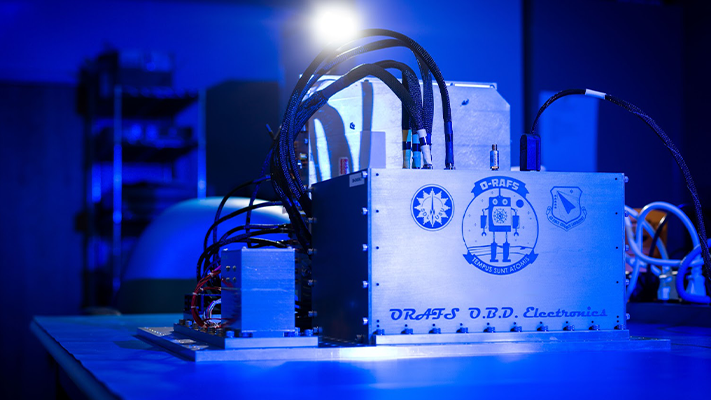
AFRL’s Quantum Sensing & Timing (QST) group looks into the development of advanced atomic clocks to further improve time measurements and investigates ways to use and distribute the precise time. (AFRL)
NATIONAL HARBOR, Md. — What difference does a nanosecond make? If you’re using your phone’s GPS to find the nearest Starbucks, not much. But for satellites zipping along in low orbit at five miles per second, radio waves moving at the speed of light, or AI chips doing billions of calculations per second, being off by one billionth of a second actually matters.
That’s why the US military wants to move beyond the GPS timing signal — which is accurate to less than 30 nanoseconds, and which enemies can jam — to compact “quantum clocks,” small enough to fit in a missile warhead or small drone and accurate to the picosecond (one thousandth of a nanosecond) or beyond.
Last year, the Air Force Research Laboratory, the US Navy, and foreign partners from the ultrasensitive Five Eyes alliance collaborated to test quantum tech at sea during the annual Rim of the Pacific exercises, AFRL official Michael Hayduk said this morning. That included tests of quantum sensors and navigation systems — both of which rely on precision timing — as well quantum clocks, he said. The goal was take bulky experimental systems from the lab — “very large, lots of lasers” — and shrink them down to fit aboard a ship, while making them rugged enough to preserve their atomic-scale accuracy despite the constant motion of the ocean, he told the Air Force Association conference outside DC.
“We were kind of surprised how good some of the results were,” Hayduk said. “We’re going to go back [to the lab] and continue to tweak.”
So how close are quantum clocks to militarily relevant reality, given all the often-overheated quantum hype? Consider that full-scale quantum computers, capable of breaking any existing encryption, are generally considered to be more than a decade away. Last year, the NSA officially set a deadline for defense contractors to implement new quantum-proof algorithms by 2035 [PDF].
But a quantum clock is a much simpler piece of hardware, and there have been major advances in crucial underlying technologies, especially the ultra-precise lasers used to measure and manipulate individual atoms oscillating billions of times per second.
RELATED: DARPA’s ‘ROCkN’ laser-based clocks will know what time it really is, to the sub-picosecond
“When we look at quantum capabilities that could be near-term relevant in five to 10 years… something we can shove in any old aircraft… it really comes down to timing — clocks that are millions of times better than today’s atomic clocks,” said Heather “Lucky” Penney, a former fighter pilot now at AFA’s Mitchell Institute. Of all the potential applications of quantum tech, she told the AFA conference, “that is probably the nearest term capability.”
Clocks with “a million times” greater precision are “the nearest term” application of quantum tech, agreed Chester Kennedy, who oversees research and security applications at ColdQuanta.
Today’s atomic clocks are bulky and expensive, which means they can be accommodated aboard a small number of bulky, expensive platforms, like GPS satellites. But, Kennedy told Breaking Defense after the AFA panel, quantum clocks are not only exponentially more accurate, improvements in miniaturization mean it should soon be possible to shrink them to the size of a water bottle.
That means you could accommodate quantum timing aboard a modestly sized drone, or in an electronic warfare pod on a jet fighter, or in the targeting systems of a hypersonic missile, instead of relying on a GPS timing signal that enemy electronic warfare units could jam. And with exponentially more precise timing, quantum-equipped forces could hop frequencies more frequently to avoid enemy jamming, transmit more devilishly complex jamming themselves, and deliver precision ordnance more accurately.
Of course, all this depends on getting today’s accurate but bulky quantum clocks small and tough enough to work on the frontline. That’s not a challenge the commercial sector or academia have much incentive to solve, warned several of the panelists, so the Pentagon has to lead the way on miniaturization R&D — and pay for it.
“The people that are doing the quantum information science R&D are not experts in mission-level sensing or mission-level timing,” said Tanner Crowder, a quantum expert at the White House Office of Science & Technology Policy. “They don’t know necessarily what it takes to take something that’s sprawled out on a 4×8 optics breadboard and … make it go on a ship or on a plane.”






















